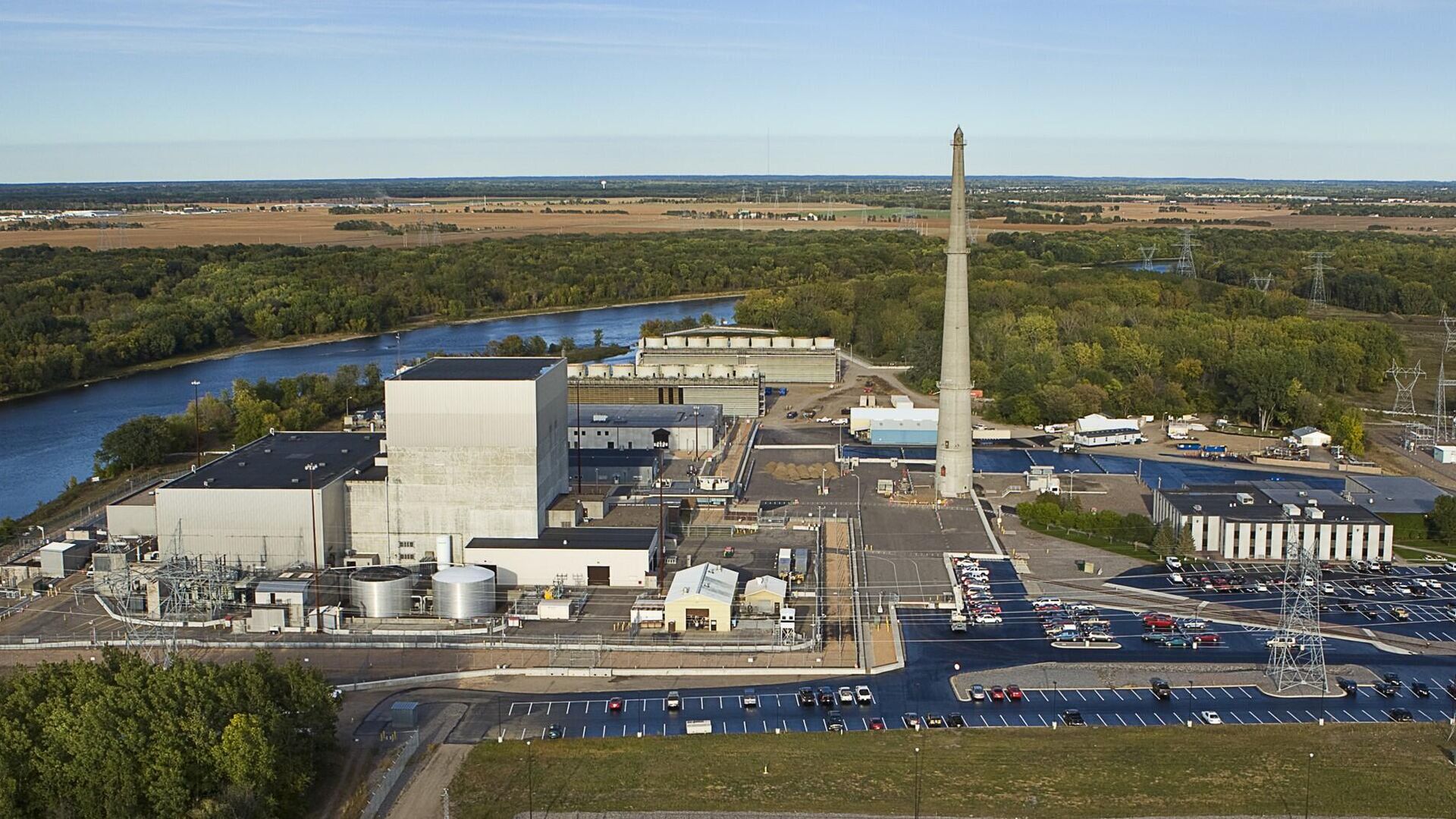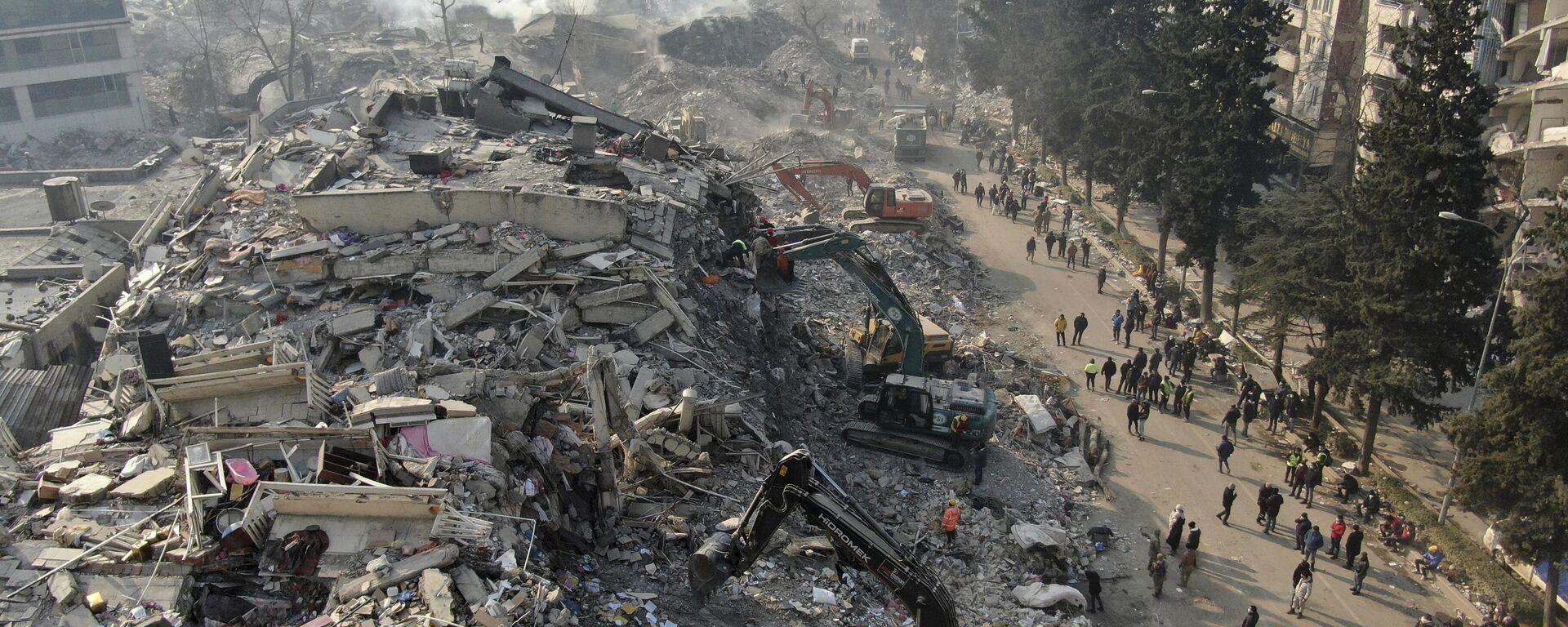Minnesota Nuclear Plant Announces Shutoff Plans After Second Radioactive Water Leak
21:11 GMT 24.03.2023 (Updated: 16:57 GMT 31.07.2023)
Subscribe
A nuclear power plant in the US state of Minnesota will be shut down for repairs after leaking radioactive water for a second time, the owner of the facility has announced. The news comes amid a period of increased scrutiny of the frequency of industrial accidents in the United States.
Xcel Energy said on Thursday that it had detected a second leak of tritium, a radioactive form of hydrogen, from the Monticello Nuclear Generating Plant, which sits on the Mississippi River upstream from the state capital of Minneapolis, Minnesota. The plant will be powered down in order to perform the necessary repair work.
"While the leak continues to pose no risk to the public or the environment, we determined the best course of action is to power down the plant and perform the permanent repairs immediately," Xcel Energy President Chris Clark said in the news release. “We are continuing to work with and inform our state, federal, city and county leaders in the process.”
The release said the new leak was "anticipated to be in the hundreds of gallons" and "does not pose any risk to health or the environment." However, a prior leak detected in November 2022 but not disclosed to the public until this month saw some 400,000 gallons of radioactive water leaked from a water pipe running between two buildings at the facility into the Mississippi River.
According to the release, only 25% of the tritium has been recovered thus far.
Roughly 30 miles downstream from the Monticello plant are the "Twin Cities" of Minneapolis-St. Paul, which have a combined population of more than 800,000 people.
According to the Nuclear Regulatory Commission, a US federal nuclear regulator, tritium or hydrogen-3 is a weakly radioactive isotope of hydrogen that is naturally occurring, but can also be produced inside a nuclear reactor when a neutron strikes a control rod made out of the element boron, or sometimes by being split from an atom of uranium-235, i.e., the nuclear fuel itself.
This hydrogen-3 atom can bond with other atoms just like regular hydrogen, including forming water molecules with oxygen. Thus, it can be ingested. The NRC warns that a very large exposure to tritium can create health problems, including an increased risk of cancer, but that because of its weak radioactivity, tritium poses no major risk at lower levels of exposure.
The radioactivity of the released tritium has not been made public. However, the NRC notes that “drinking water for a year from a well with 1,600 picocuries per liter of tritium (comparable to levels identified in a drinking water well after a significant tritiated water spill at a nuclear facility) would lead to a radiation dose (using EPA assumptions) of 0.3 millirem (mrem).”
That dose, it notes, is roughly 3,500 times lower than the dose received from a full-body CT scan at a medical facility, or 12 times lower than the dose received from a round-trip cross-country airplane flight.
Xcel, the plant owner, is the country’s tenth-largest power provider, with facilities in 10 US states. The Monticello plant has a single BWR-3 reactor built by General Electric in 1971, with a capacity of 671 megawatts. It was originally licensed until 2010, but a 2006 renewal license has allowed it to continue operation until September 2030.
The leak comes amid a flurry of industrial accidents in the United States, including the catastrophic train crash, explosion, and toxic chemical release that occurred in East Palestine, Ohio, on February 4. That incident was caused by a wheel truck on a freight car that overheated and failed, causing it to derail and triggering a pileup of freight cars, which ignited. Later, authorities conducted a "controlled release" of vinyl chloride, a toxic chemical, in a massive explosion that spread the toxins across the area. Locals have alleged a coverup of the release.



